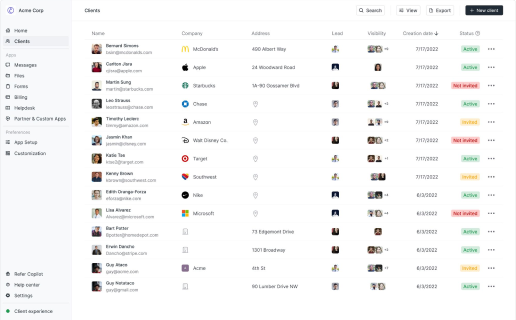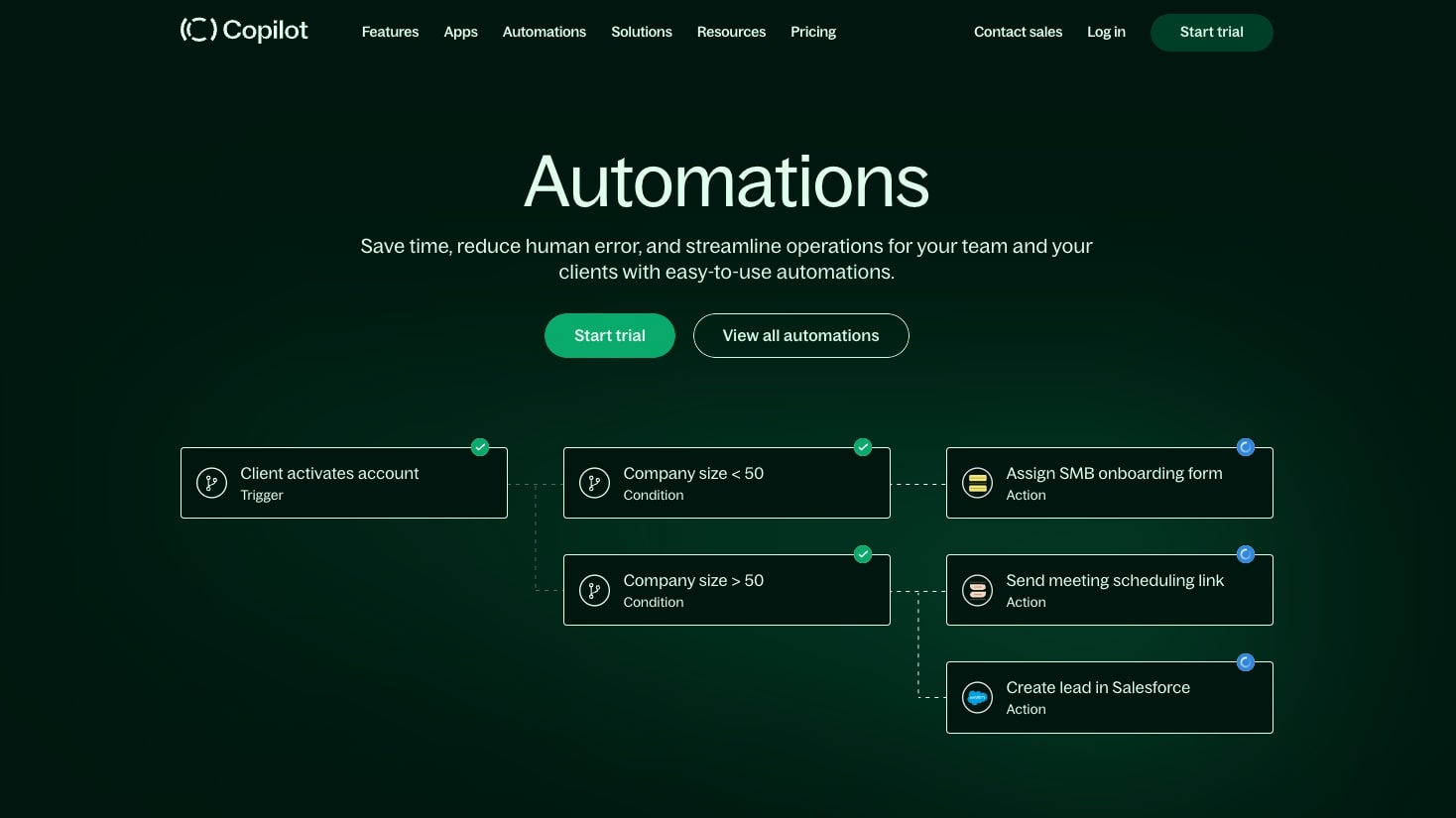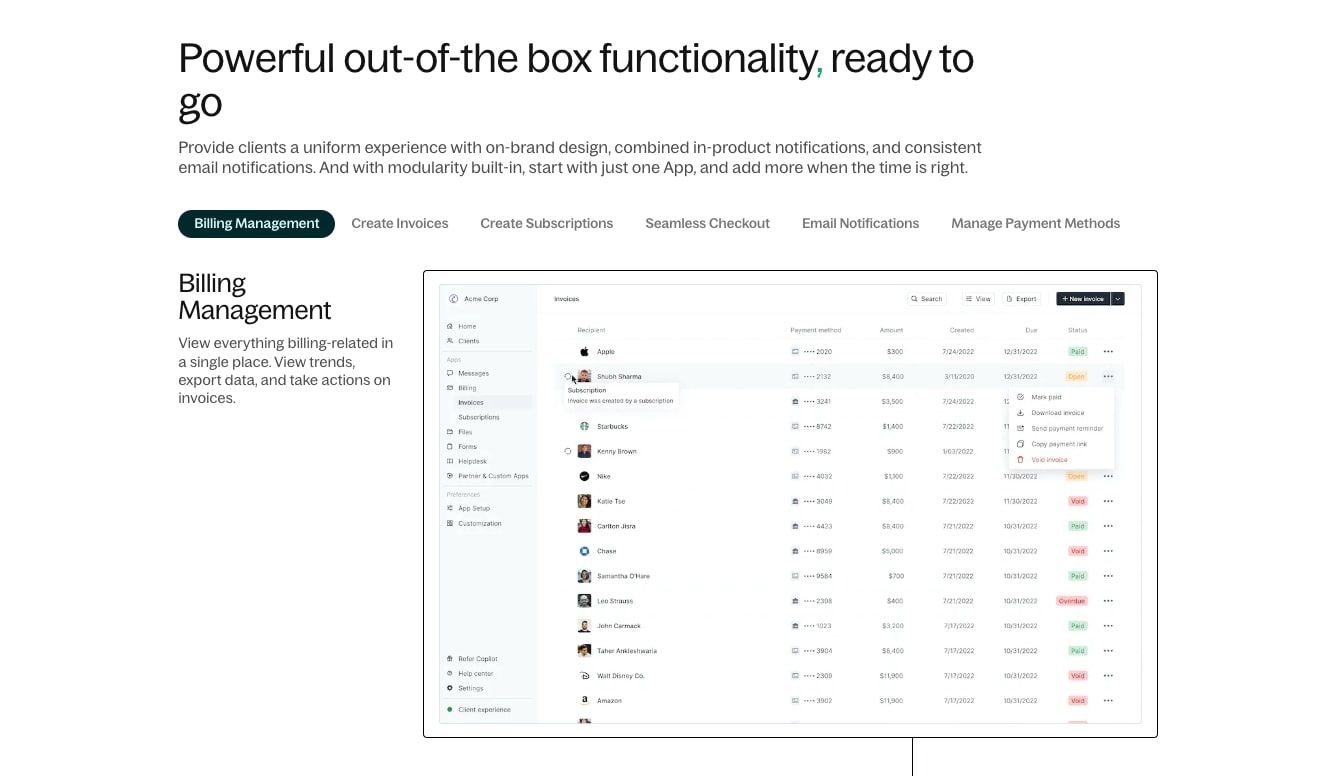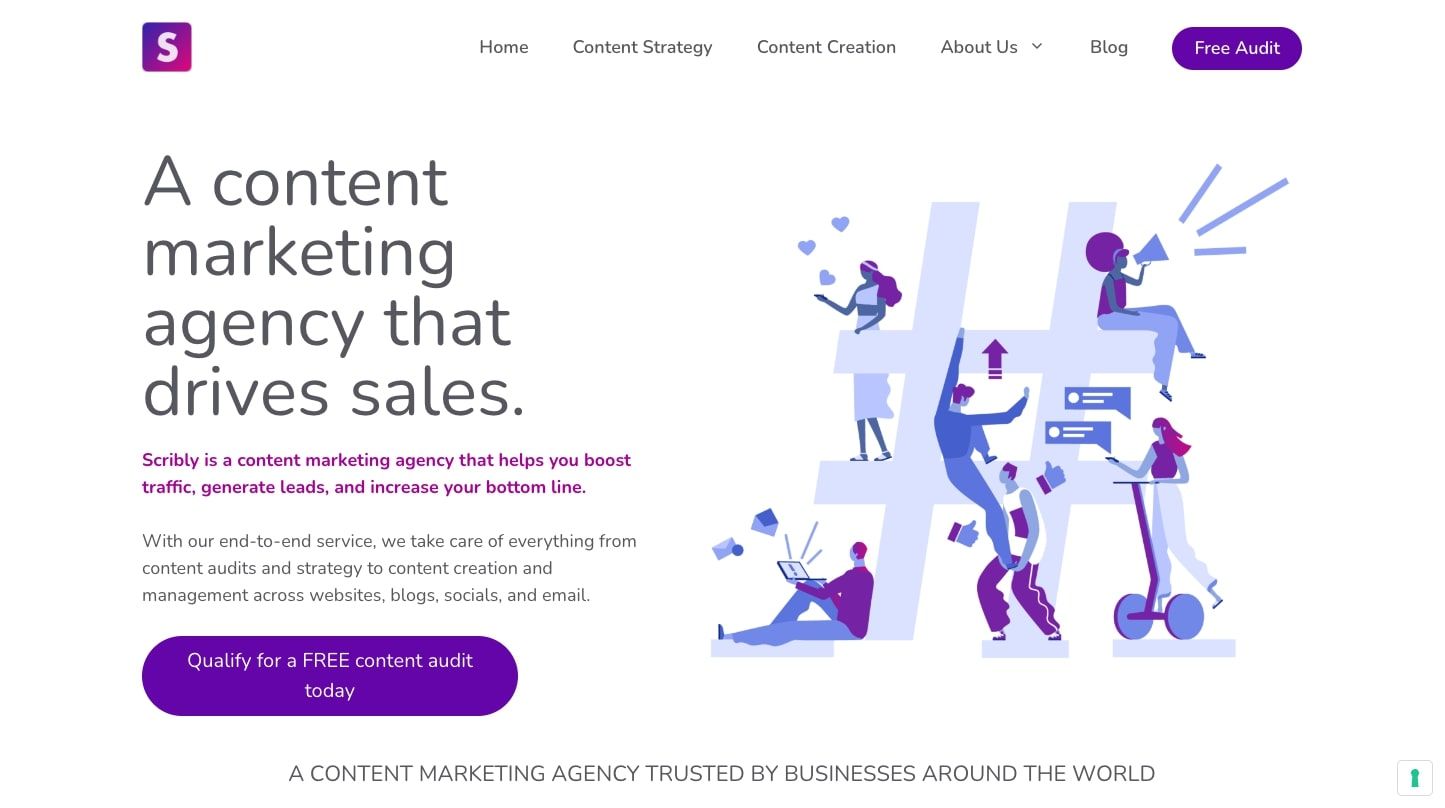Back to Blog Home
How to start a marketing agency (the right way) in 2025

[Hide]

Simplify your marketing agency with Copilot
Copilot gives you the tools to start, run, and grow your client business. Try it for free!
4.9 rating
Almost two years ago, I quit my dream job to start my dream marketing agency.
I haven’t looked back since.
I mean, who doesn’t want to be their own boss, get to work with awesome companies, and help them drive growth through creative marketing plans?
But, you're probably wondering if you can start a marketing agency all by yourself. The answer is yes — I did it!
A profitable venture? Definitely! However, beginning a business is not simple, it requires cautious arranging and execution (no surprise).
In this article, I’ll guide you through the crucial steps I took to start a successful marketing agency — from finding your niche and productizing your service to scaling client acquisition strategies.
Let’s get to it!
Can I start a marketing agency on my own?
Starting your own marketing agency is indeed an exciting journey and can absolutely be undertaken independently.
I know because I did it.
With the right mix of dedication, continuous learning, and using the right tools, your dream of creating a successful digital marketing agency is achievable. To reach success, it’s important to understand various digital marketing channels and strategies that work best for each. You’ll also need to acquire knowledge on how to use different online tools that can help you stay ahead of the competition.
Building an ideal team is also key to delivering top-notch services, fulfilling client expectations, and attaining sustainable success. Encouraging your team to take online digital marketing courses can help them stay up-to-date with the latest trends and strategies.
Studies have revealed that we spend between 5 to 8 hours a day online, providing businesses with the perfect opportunity to connect with their customers where they spend the majority of their day. This is why starting your own digital marketing firm can be a great business idea.
Is owning a marketing agency profitable?
As an entrepreneur, profitability undoubtedly ranks high among your concerns. This begs the question, does owning a marketing agency offer a profitable venture? The answer is a resounding yes!
Owning a digital marketing business in the form of a marketing agency can be highly profitable, with profit margins varying on the services you provide and how much of the work you want to outsource. Plus, the added bonus of being able to work remotely means you can reduce overhead costs and focus on delivering exceptional services to your clients.
10 steps to starting a marketing agency in 2025
The steps to start a marketing agency can look different for each person and use case. However, I created a list that I personally followed to start and grow my agency — so I know these steps are tried and true.
Here are my 10 steps to starting a marketing agency:
- Find your niche
- Productize your service
- Do outreach to sign your first client
- Send a proposal and sign a contract
- Onboard your client with a client portal
- Send your client an invoice
- Create a real company
- Create a website for your agency
- Create a case study
- Scale your client acquisition efforts
Okay, let’s dive deeper into each one of these.
1. Get good at a specific marketing discipline (aka find your niche)
The first step to starting a successful marketing agency is to become a master in your craft.
You'll see a lot of content online talking about how to start a marketing agency with "no experience" and how easy it is to make X amount in a certain month.
But to be honest, you should not start a marketing agency if you have not mastered a specific area of marketing. This is because, as a marketing agency, you have a moral responsibility to provide your clients with the best possible service — especially when they gave you a chance over the hundreds of other agencies they could have gone with.
Companies hire marketing agencies to help them get results. So, you need a history of getting those results.
The best way to do this is to work at a marketing agency, work in-house for a company, or do both over your professional career (which is what I did). This will give you the opportunity to hone your craft. And, because the marketing agency landscape can be competitive, it's important to get really good at one specific thing. For me, that was content marketing and SEO. For you, it could be the same, or you can get good at social media marketing, running ads for clients, copywriting, building websites, and more.
A marketing agency can provide a wide range of digital marketing services, including:
- Social media management
- Content creation
- Search engine optimization (SEO)
- Pay-per-click (PPC) advertising
- Email marketing
- Website design and development
By focusing on a specific marketing discipline, you make sure that potential clients understand what your agency does and how it stands out from other digital marketing agencies in the market.
Once you've figured out the service(s) you want to provide, it's time to create packages so both you and your clients know what your offering is from the start.
2. Productize your service
Productizing your services enables you to package and price your services as standardized products, allowing you to clearly define the parameters and pricing of your service to be sold like a product. This can be a great way to maximize your business potential, make your services more accessible and understandable to potential clients, and help eliminate scope creep once a project is kicked off.
To package your services into a clear, easy-to-understand offering that will attract your target market, think about the extent of the service, the amount of time it will take to provide it, and the cost of delivering the service.

For example, Designjoy is a single-person agency that has packaged their services into a subscription model.
This helps them showcase the value they offer and makes it easier for potential clients to understand and purchase their services. This approach helps you stand out from competitors who may offer similar services but don’t present them as clearly or transparently to their target audience.
3. Do outreach to sign your first client
Once your niche is carved out and your services are productized, the next step is to concentrate on acquiring your initial client. To do so, you can:
- Leverage networking from previous jobs
- Reach out to founders of companies you want to work with on LinkedIn
- Cold email companies you want to work with (use tools like Hunter.io or VoilaNorbert to find company email addresses)
The way I personally signed my first client for my content marketing agency was to write a free guest post. I reached out to the founder of a company that I saw huge potential for. I asked if I could write them a free article going after a specific keyword that was important for their business. They agreed and a few months later, they started ranking #1 in Google for that keyword. They were also an enterprise company so that single article brought in thousands of dollars in deals for them. At that point, it was a no-brainer for them to sign a long-term contract because I focused on providing value first.
Depending on the type of agency you want to run, your approach may look different. However, the principle of providing value first before you ask for anything is consistent across any marketing service you want to provide.
For example, you can email the founder of a company and tell them the exact steps they need to take to grow their business. And you can end your email with something like, “If you want to dive deeper into this, we can hop on a call — no strings attached.” This will help you land a meeting to show off your skills.
By taking this approach, and reaching out to several companies, it’s inevitable that someone will eventually give you a chance. And once someone is ready to start working with you, it’s time to send them a proposal and contract.
4. Send a proposal and contract
After establishing a connection with a prospective client, the next step is to send a comprehensive marketing proposal and contract detailing your services, pricing structure, and deliverables.
If you’ve successfully productized your service, you may not need to do this step anymore. However, it can be tough to productize your service if you’re just starting out. For me, it took working with a few clients before I polished my services and created packages that I knew I could consistently deliver.
So, in the beginning, you’ll want to clearly outline what you’ll be doing for your first client.
Crafting a compelling proposal is essential in showcasing the value you can bring to your clients and securing a successful agreement. Make sure to include a well-structured business plan, pricing for each service you offer, as well as any additional fees or discounts that could motivate customers to purchase your services.
Process Street has a great article on how to write a proposal. But if you’re looking for a recap of that article, here’s what your proposal should include:
- Introduction: This is where explain the problem, the solution, the costs, and the benefits.
- Define the issue: This is where you clearly explain the issue, the purpose of the project, the main argument, and any background information.
- The solution: This is where you clearly state a step-by-step plan on how you will deliver your services to address the issue at hand.
- Qualifications: This is where you give any social proof or explain why you’re the best agency or person for this project.
- Conclusion: This is where you state the costs, benefits, and contact information so potential clients can follow up.
At this point, if your client is ready to follow through, they will either ask you to send a contract or they will send you one (depending on the size of the company you are working with).
From personal experience, large companies that have legal teams will take your proposal and create a contract that they will then send to you for review. When working with smaller companies, you’ll generally have to send them a contract which you can generate by searching for “[the service you provide] + contract generator” in Google.
Once a contract is set in stone and your client is ready to move forward, it’s time to onboard them.
5. Onboard your client with a client portal
Your onboarding process is extremely important. First impressions are everything, and this is where you need to show your client that you are a legit business and that you take their success seriously.
The best way to create a smooth onboarding process that not only makes you look professional but also helps you stay organized and be a better project manager is to use a client portal platform to run and manage your agency.
My favorite tool for this is Copilot, yes the blog you are currently reading. And no, I am not an employee of Copilot. I’m actually a customer and use it to manage my agency.
I like to use Copilot because it automates most of the onboarding process for me.

Using a client portal can help you bring everything into one place — from communication, intake forms, file sharing, reporting, invoicing, and more. This not only keeps your client informed but also demonstrates your commitment to transparency and delivering high-quality work.
If you want to learn more about the onboarding process check out this article on the Copilot blog.
6. Set up billing and send your first invoice with Copilot

Once you’ve onboarded your client into their portal, it’s time to set up your billing process. Some agencies will bill clients after the work is complete, while others will bill upfront. I personally prefer to bill upfront as it helps reduce the risk of clients not paying you for your services. Billing upfront also allows you to have cash to invest in growing your agency, whether that’s hiring contractors to help you execute your services or running ads to acquire more clients.
For efficient management of invoicing, payment processing, and financial tracking, adopting a billing tool such as Copilot is recommended. Setting up billing with Copilot is easy — just create an account, add your payment information, and you’re ready to create invoices and track payments.
Sending invoices using Copilot is also straightforward, as you can simply create an invoice in the Copilot dashboard and email it to your client. You can also create recurring invoices (also known as subscriptions) so you can automatically bill your client on any time frame you’d like (whether that’s daily, weekly, monthly, quarterly, or annually).
By setting up payment tracking in your Copilot dashboard, you can stay on top of payments and track any changes, ensuring your agency’s financial health remains strong.
For more information on this, check out this article I wrote on how to bill your clients for the first time using Copilot
7. Create a real company and open a business bank account
Okay, this is where things can start to feel a bit daunting if you’ve never opened a real business. And this part is going to vary on a case-by-case basis. Depending on where you live, you’ll definitely want to speak to an accountant to make sure you do this part correctly.
You’ll notice how I left this as step 7, instead of having it as the first step. This is because many entrepreneurs get stuck thinking too hard about this part of their business, without even actually having any sales first.
Once you know you have real cash flow coming in, you want to separate your personal finances and liabilities from your business. In the US, many freelancers and marketing agencies open an LLC (Limited Liability Company). This will allow you to open a business bank account and do all your bookkeeping and business under your company name.
This will help you with tax write-offs and make your bookkeeping a lot easier when it comes to tax season. As agency owners, we get the benefit of writing off a lot of your expenses as business expenses. Are you paying for wifi with your personal bank account? Need a new computer to do your work? Well, all of these can be put under your business as expenses, which can later be written off from your taxes.
Again, this part is going to depend on your local laws, and any information here is for entertainment purposes only. Please follow instructions from your local accountant on this part. Copilot, nor I, are not responsible for any actions you take regarding the legalities of your business.
8. Create a website for your marketing agency
Once you have your company established and your business account ready, it’s time to make yourself more legit. The best way you can do this is by creating a website for your marketing agency.

Maintaining a professional website is imperative for drawing in potential clients as well as displaying your services, portfolio, and case studies. You can use a website builder like Webflow or Framer to craft a professional website or hire a web designer to create a custom website tailored to your needs.
Optimize your website for search engines, leverage social media to reach your target audience, and craft content tailored to your audience’s needs to attract potential clients to your website. A well-designed website not only helps you draw in potential clients but also demonstrates your expertise and commitment to delivering high-quality work.
9. Create a case study
Once you have your website, and you’ve gotten results from your first client, it’s time to create a marketing asset that will help you acquire more clients.
You can do this by creating a case study as social proof of your skills.
As you collaborate with clients and register successes, it becomes necessary to chronicle these triumphs and craft case studies that exhibit your proficiency and outcomes. Case studies are powerful marketing tools that showcase your agency’s ability to deliver tangible outcomes and attract prospective clients who are looking for a proven track record.
By providing detailed information about the project, the challenges faced, and the marketing strategies employed to achieve success, case studies offer potential clients a glimpse into your agency’s capabilities and the results they can expect when working with you. These case studies can be showcased on your website, shared on social media, and used in sales presentations to demonstrate your agency’s expertise and success.
10. Scale your client acquisition strategy
With a sturdy foundation laid, the next course of action is to augment your client acquisition strategy to expand your marketing agency and boost revenue. This involves refining and expanding your marketing efforts to reach a larger audience, while also nurturing existing client relationships to encourage repeat business and referrals.
You can scale your client acquisition efforts by:
- Asking existing clients for referrals
- Blogging and leveraging SEO on your website
- Running ads
- Going to conferences and networking
There are also many other ways you can continue to get more clients. You could continue to leverage cold email (like we went over in step 3) or follow some of the strategies in this article.
Overall, stay adaptive and innovative to stay ahead in the market and continuously improve your agency’s services, ensuring long-term success and growth in the competitive digital marketing industry.
How hard is it to run a marketing agency?
Managing a marketing agency is a blend of challenges and rewards. It demands dedication, flexibility, and relentless learning to maintain an edge in the competitive market. As an agency owner, you’ll face various challenges, from acquiring new clients to managing projects and ensuring high-quality work is delivered. However, with dedication and perseverance, you can overcome these challenges and build a successful marketing agency.
To ensure long-term success, it’s crucial to:
- Remain steadfast even when times are tough
- Continuously improve your agency’s services to meet the ever-evolving needs of your clients
- Stay committed, adaptable, and focused on delivering exceptional results
By doing so, you can thrive in the competitive world of digital marketing and build a lasting and successful marketing agency, ultimately leading to a successful business.
Modern marketing agencies run on Copilot

Starting a digital marketing agency is an achievable dream, even if you're going solo. You've learned that finding your niche and mastering it can set the foundation for success.
Your offering isn't just a service — it's an item. Productizing your offer allows clients to understand exactly what they're getting, simplifying sales, and client management processes.
Landing your first client might be tough, but with effective outreach strategies in place, you'll soon see results. Then comes creating proposals or statements of work — this stage solidifies the value proposition of your services to potential clients.
In the rapidly evolving landscape of digital marketing today, contemporary marketing agencies need modern tools to optimize their operations and outpace the competition. Copilot can help marketing agencies save time, automate tasks, and scale their business. By streamlining operations from client management to billing and financial tracking, Copilot becomes an invaluable asset for any marketing agency.
Leveraging tools like Copilot allows marketing agencies to focus on delivering exceptional results for their clients while ensuring efficient management of their business. By staying up-to-date with the latest trends and tools in the industry, marketing agencies can continue to thrive and grow in an ever-evolving digital landscape. If you’re ready to take Copilot for a spin, be sure to play around with the marketing demo portal to see its power.
Share this post
Sign up for our newsletter
Subscribe to our newsletter to receive emails about important announcements, product updates, and guides relevant to your industry.
